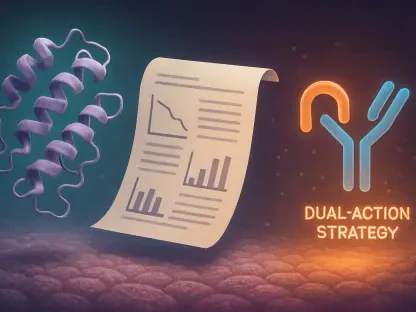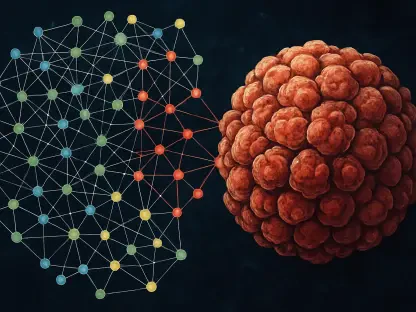Ichthyosis, a rare genetic skin disorder, presents significant daily challenges for those affected, compelling them to adhere to labor-intensive skincare routines. Unfortunately, this debilitating condition has not captured major pharmaceutical interest, leaving dedicated dermatologists to spearhead research into possible treatments. Recent efforts to repurpose drugs initially developed for psoriasis and eczema have shown potential but also underscore the complexity and diversity of ichthyosis types. Through gene expression studies, researchers have identified potential biomarkers and molecular similarities with other skin conditions, thus setting the foundation for future research efforts. Clinical trials for novel treatments often face setbacks, underscoring the necessity for tailored therapies to address the various subtypes of ichthyosis. The importance of community engagement remains critical in advancing research and clinical trials in such rare diseases.
Understanding Ichthyosis
Nature of Ichthyosis
Ichthyosis is a collective term for over 30 different types of genetic disorders that affect skin cell turnover, resulting in thick, scaly skin. The condition manifests due to genetic mutations that interfere with how quickly skin cells grow and shed, creating a skin appearance often described as fish scales, a characteristic that aligns with its Greek etymology “ikhthys,” meaning “fish.” Diversity in the severity and manifestations of ichthyosis is vast; ichthyosis vulgaris, one of the milder forms, contrasts starkly with harlequin ichthyosis, where the skin forms thick plates that can be life-threatening. Samuel Simmons, for example, has lamellar ichthyosis, characterized by a thin membrane covering the skin at birth, which subsequently sheds to reveal persistent dark, dry scales.
The wide range of ichthyosis types translates to varied impacts on those afflicted. Besides the cosmetic issues, patients grapple with a suite of healthcare challenges. The scaly skin may lead to increased skin infections, redness, and pronounced itchiness, compounding their daily discomfort. Sweating abnormalities due to disrupted skin barriers also make temperature regulation arduous for patients. Severe forms of ichthyosis can necessitate surgical interventions to rectify complications such as difficulties in closing the eyes or experiencing impaired hearing. For Simmons, managing his condition involves spending up to four hours daily scrubbing his skin to alleviate symptoms, a testament to the hefty burden the condition places on individuals’ routines and quality of life.
Impact on Patients
The impacts of ichthyosis extend far beyond physical discomfort, infiltrating various facets of patients’ lives and dictating stringent self-care regimens. Skin infections are a recurrent issue, spurred by the scaly, dry skin which is more susceptible to bacterial invasion. This chronic vulnerability to infections often mandates regular, vigorous scrubbing to remove the flaky skin and apply crucial moisturizers that help to keep the skin as pliable and infection-free as possible. Additionally, the persistent redness and itchiness exacerbate the daily struggle, undermining patients’ comfort and sleep. Complications in sweating and the resulting difficulty in body temperature regulation further illustrate the extensive disruptions ichthyosis enacts on normal bodily functions.
In severe cases, managing ichthyosis may require surgical techniques to address aggravated symptoms like the inability to fully close eyes or obstructed hearing due to scaly deposits. Such interventions, while necessary, underscore the profound and often painful impact of the disease on patients’ lives. The demanding skincare routines can become isolating for individuals, making even mundane daily activities a cause for anxiety. For Samuel Simmons, the continuous need to scrub and moisturize highlights not just the physical tax but also the emotional and mental toll. The substantial commitment to daily skin care serves as a stark reminder of the pressing need for more effective and long-lasting treatment options.
Current Treatment Landscape
Limited Treatment Options
At present, managing ichthyosis is an uphill battle for sufferers, primarily due to the absence of approved treatments specifically targeting the condition. Consequently, patients are left to rely heavily on basic skincare regimens involving moisturizing and continuous exfoliation to manage their symptoms. Moisturizers are often essential to retain skin hydration and reduce the risk of cracks and infections. Exfoliating scrubbers help remove excess scales, providing temporary relief but no permanent solution. Some success has been found with retinoids—compounds derived from vitamin A commonly employed in acne treatment—which have managed to reduce scaling in select patients. Nonetheless, these retinoids are not universally effective, indicating a critical gap and a dire need for innovative approaches within the treatment landscape.
The absence of targeted therapies further complicates the lives of ichthyosis patients, leaving them with little choice but to manage symptoms rather than address the root cause of their condition. The limited efficacy of available treatments presses the urgent necessity for new strategies and drugs capable of offering more substantial and lasting alleviation. This therapeutic vacuum has galvanized researchers and dermatologists to proactively explore alternative routes such as drug repurposing, aiming to make headway in treatment options until more tailored solutions emerge.
Efforts in Drug Repurposing
Dermatologists like Joyce Teng and Amy Paller have been at the forefront of efforts to repurpose existing drugs, originally devised for conditions such as psoriasis and eczema, owing to similar disruptions found in skin barrier defects among these ailments. These disorders share overlapping molecular profiles, particularly elevated levels of the inflammatory marker IL-17. By studying these molecular intersections, researchers aim to harness the therapeutic potential of existing medications to offer relief to ichthyosis sufferers. Paller’s team, through its molecular insights, has pinpointed such similarities, providing a compelling basis for trials with IL-17-targeting drugs like secukinumab and ustekinumab.
Early clinical trials for these drugs have shown mixed results, with certain patient subsets responding well, while others exhibit limited improvement. These findings underscore the complexity of ichthyosis, with its myriad subtypes and varying molecular profiles. However, the repurposing approach offers a promising transitional strategy to leverage available therapies while deeper, more specific treatments are under development. This innovative pathway not only expedites potential relief for patients but also ensures efficient use of existing research and pharmaceutical resources.
Challenges in Drug Development
Clinical Trial Hurdles
The pursuit of effective treatments for ichthyosis is fraught with significant clinical trial hurdles, primarily due to the disease’s rarity and heterogeneity. Recruiting an adequate number of patients for trials is inherently challenging when dealing with rare diseases, often resulting in smaller sample sizes that may not be sufficiently representative of the broader patient population. This lack of large, diverse patient groups makes it difficult to draw definitive conclusions and poses a barrier to gaining approval for new treatments. Trials for IL-17-targeting drugs like secukinumab and ustekinumab have illuminated these challenges, showing limited success with responses confined to certain patient subsets. These complications necessitate more inclusive, adaptive designs for clinical trials to better accommodate the distinctive nature of rare diseases like ichthyosis.
A further challenge lies in the heterogeneity of ichthyosis itself. The condition comprises over 30 types, each with unique genetic mutations and manifestations. Consequently, a treatment that proves effective for one type may be ineffective or only partially effective for another. This variability exacerbates the difficulty of developing universal therapies, accentuating the need for precise, subtype-specific approaches. Tailored treatments, informed by genomic and molecular studies, thus represent an essential avenue for future research and drug development, aiming to mitigate the diverse impacts of ichthyosis more effectively.
Personalized Treatment Approach
In response to the inherent variability and complexity of ichthyosis, researchers advocate for a personalized medicine approach. Personalized treatment involves matching patients with therapies best suited to their specific subtype of ichthyosis, based on detailed genomic and molecular data. By leveraging advanced genomic technologies, researchers aim to reclassify and better understand the intricate landscape of ichthyosis, paving the way for more effective and targeted treatments. This approach not only promises optimized efficacy but also holds potential to reduce the substantial daily burden on patients who currently rely on generalized treatments with limited success.
Efforts are underway to implement this personalized approach, involving extensive gene expression studies and biomarker identification. By pinpointing specific genetic mutations and pathways implicated in various ichthyosis subtypes, researchers can develop tailored therapies that directly address the root causes of the disease. This precision medicine strategy represents a significant departure from the one-size-fits-all model, promising more nuanced and effective solutions for individuals struggling with this debilitating condition. Moreover, personalized treatments may enhance patient adherence and satisfaction, as therapies become more attuned to their unique needs and circumstances.
Future Directions in Research
Gene Expression Studies
Innovative gene expression studies have been at the forefront of ichthyosis research, uncovering potential biomarkers and revealing molecular similarities with other skin conditions. These studies delve into the genetic underpinnings of ichthyosis, seeking to identify specific mutations and pathways that contribute to the disease’s manifestations. By mapping out these genetic landscapes, researchers aim to advance targeted therapies that can disrupt the disease process at its core. Understanding these molecular mechanisms is paramount for developing treatments that can more effectively alleviate the symptoms and improve the quality of life for ichthyosis patients.
These gene expression studies have already illuminated crucial overlaps between ichthyosis and other skin ailments such as psoriasis. Such findings suggest that therapies developed for these conditions could be repurposed to benefit ichthyosis patients. The identification of elevated IL-17 levels in both ichthyosis and psoriasis serves as a case in point, providing a molecular target for existing psoriasis medications. Continued research in this vein promises to expand the arsenal of available treatments, leveraging existing knowledge to expedite the development of effective therapies for ichthyosis.
Community Engagement
The role of community engagement in advancing ichthyosis research and clinical trials cannot be overstated. Patient advocacy groups, research organizations, and other stakeholders play critical roles in raising awareness, securing funding, and supporting the conduct of clinical trials. These groups help bridge the gap between researchers, clinicians, and patients, fostering collaboration and ensuring that the voices and needs of those affected by ichthyosis are heard and addressed. By promoting education and advocacy, these organizations empower patients and drive momentum in the search for effective treatments.
Collaboration within the community is vital for overcoming the challenges posed by rare diseases like ichthyosis. Engaging patients and caregivers in the research process not only enriches the understanding of the disease but also enhances the design and implementation of clinical trials. This participatory approach ensures that research efforts are aligned with patient priorities and that trial designs are feasible and patient-centric. Such synergy between stakeholders is essential for making meaningful strides in ichthyosis research, ultimately bringing new therapies to the bedside more swiftly and effectively.
Conclusion
Ichthyosis refers to a group of more than 30 genetic disorders that impact the turnover of skin cells, leading to thick, scaly skin. These conditions arise from genetic mutations that disrupt the speed at which skin cells grow and shed. As a result, the skin often takes on an appearance similar to fish scales—an attribute reflected in its Greek name “ikhthys,” meaning “fish.” The severity and presentation of ichthyosis vary widely; ichthyosis vulgaris represents one of the milder types, while harlequin ichthyosis features life-threatening skin thickened into plates. For instance, Samuel Simmons suffers from lamellar ichthyosis, marked by a thin membrane covering his skin at birth that later sheds, leaving persistent dark, dry scales.
The varied types of ichthyosis have diverse impacts on those affected. Beyond cosmetic concerns, patients face significant healthcare challenges. The scaly skin often leads to frequent skin infections, redness, and severe itchiness, which intensifies their daily discomfort. Abnormal sweating due to compromised skin barriers also makes it difficult for them to regulate body temperature. In severe cases, surgical interventions may be necessary to address complications like difficulty closing the eyes or hearing impairments. For Simmons, managing his condition demands up to four hours each day dedicated to scrubbing his skin to alleviate symptoms, highlighting the heavy burden the disorder places on a person’s daily life and quality of life.









